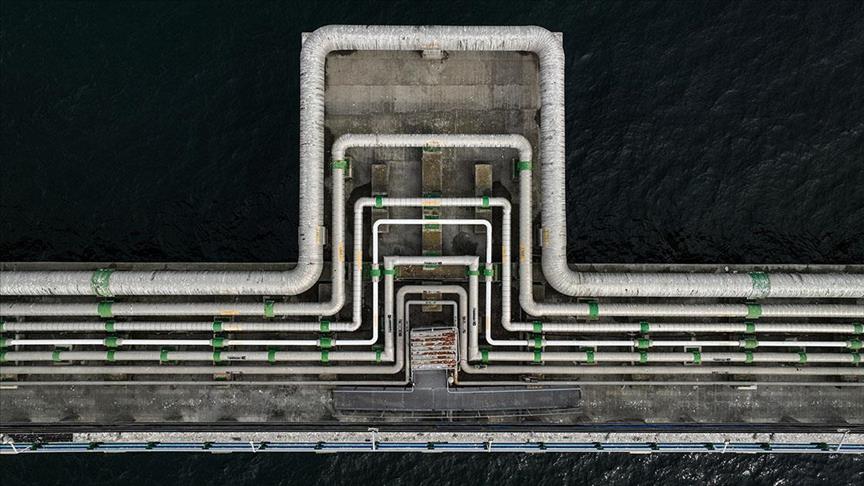European countries, in a bid to ensure natural gas supply security and expand resource diversity, are expected to increase their liquefied natural gas (LNG) regasification capacity to 324.2 billion cubic meters (bcm) by the end of this year, up by 26% from levels seen prior to the Russia-Ukraine War, though only half of the existing capacity is currently utilized.
According to the latest data published by Institute for Energy Economics and Financial Analysis (IEEFA), an international think tank, the total regasification capacity of 27 EU countries, Türkiye and the UK is expected to reach 413.6 bcm in 2030.
European countries, which focused on LNG investments after the Russia-Ukraine War started in 2022, upped their regasification capacity to 277.8 bcm in 2022 and 312.9 bcm in 2023.
Meanwhile, Europe’s gas demand continues to decline due to growing renewable energy sources and energy efficiency measures.
Europe’s gas consumption, which fell to its lowest level in 10 years last year, decreased by 5.4% annually to 232.1 bcm in the first half of 2024. EU gas consumption declined by 3.2% during the same period.
In the first half of this year, gas consumption in Norway and the UK fell by 36% and 13%, respectively.
Within the EU, the biggest decrease in gas consumption occurred in Portugal, Malta and Croatia with 18%, 15% and 14%, respectively. Natural gas consumption in Türkiye fell by 4% during the first six months of this year compared to last year.
While some countries experienced a surge in gas consumption. Finland raised its consumption level by 37%, Greece by 30%, Lithuania by 27%, Estonia by 25% and Sweden by 24%, during the same period.
IEEFA forecasted that European demand for natural gas will drop 11.2% this year to 148 bcm, ‘meaning the continent has likely already passed peak LNG consumption.’
By 2030, LNG demand is expected to fall to 93 bcm.
– LNG import bill falls to €21 billion in 1H24
IEEFA’s latest report also included assessments on investments in LNG terminals.
‘Operational LNG import terminals may already be impacted by this reduced consumption. The average utilization rate of the EU’s terminals fell from 62.8% in H1 2023 to 47.2% in H1 2024,’ IEEFA said.
In the first half of this year, Greece’s utilization rate of LNG terminals was recorded as 23% and Spain’s as 27%.
According to IEEFA, half of the LNG terminals in the EU had a utilization rate below 50% in the first half of this year.
However, European countries are still planning to invest in new LNG import terminals. IEEFA estimated that by 2030 this could result in more than 300 bcm of unused capacity in Europe.
In the first half of the year, EU countries sourced 46% of their LNG from the US, 21% from Russia, 11% from Qatar, 10% from Nigeria and Norway, 8% from Algeria and the rest from other countries.
In this period, Algeria’s share in Türkiye’s LNG imports was recorded as 45%, the US’s share as 42%, Russia’s share as 8% and the share of other countries as 6%.
IEEFA estimated that EU countries’ spending on LNG imports in the first half of 2024 decreased by 41% compared to the previous year to €21 billion.
Countries paid an estimated €10.5 billion to the US for LNG, €3.5 billion to Russia, €2.1 billion to Qatar, €2.1 billion to Algeria and €870 million to Nigeria. Norway, Egypt and Trinidad and Tobago were also paid for LNG exports.
The amount paid for LNG imports was €116 billion in 2022 and €68.1 billion in 2023.

